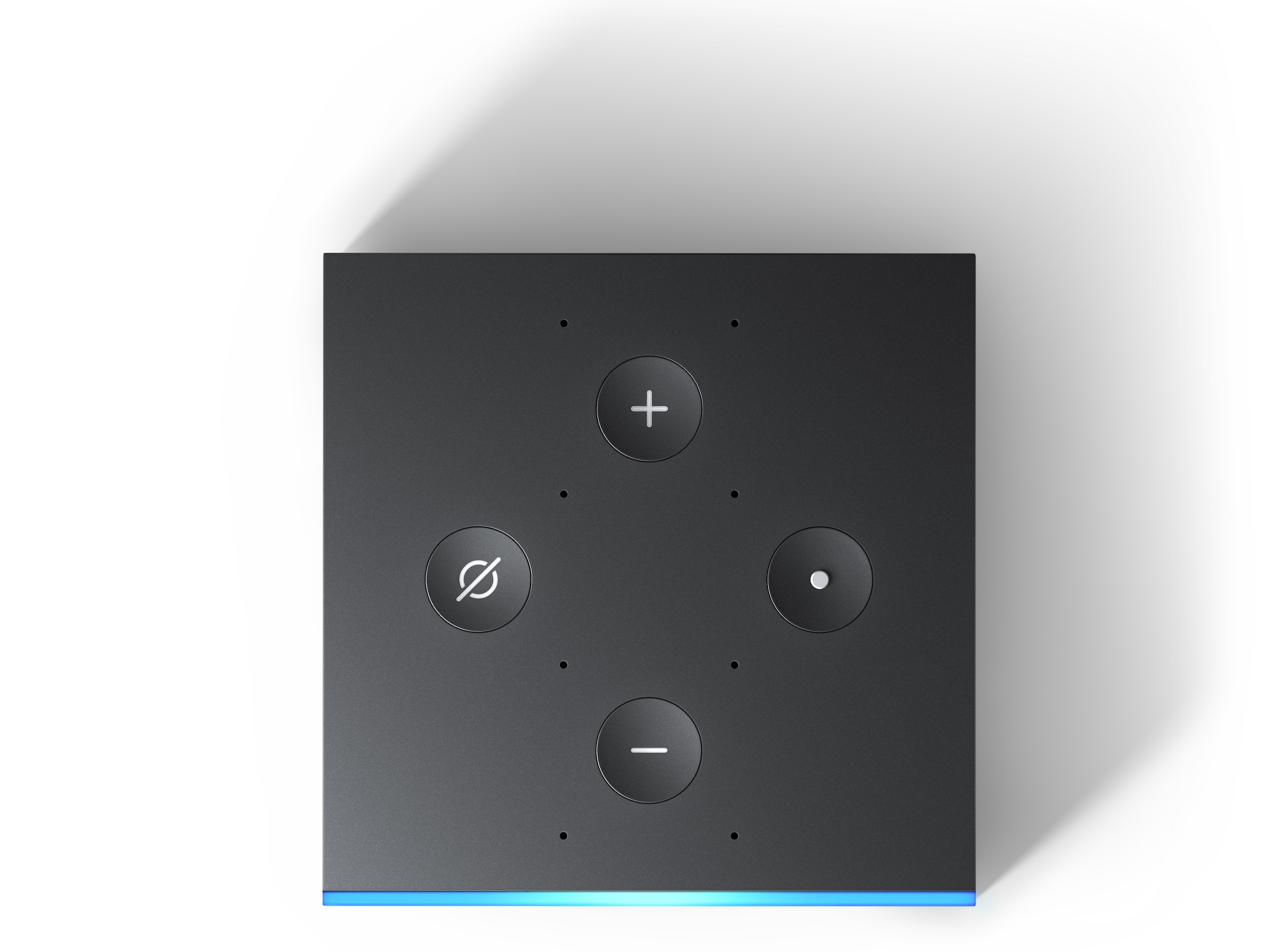As much as technology simplifies our lives, it can simultaneously introduce plenty of unique complications.
Our smart TVs are separate from our smart speakers, which are separate from our smartphones. We have multiple TV streaming accounts and multiple music streaming accounts, and no easy way to access them all at once.
This is where Amazon’s new Fire TV Cube comes in.
The device – which regularly costs $120, but is on sale for $90 during Amazon’s Prime Day – seems aimed at becoming something of a hub, a place where your home technology and your entertainment technology live together in harmony.
In theory, this is a solid premise. When I first heard about all the Fire TV Cube would be able to do, and got a demo of the device, I was blown away. This product, I thought, would solve any and all of my smart home woes.
But in practice, the Fire TV is more complicated than that. While it simplified my life in a lot of ways, it also created new, unforeseen issues. Even after nearly two weeks of using it, I'm still not sure how to feel about it.
Here's everything I love and hate about using the Amazon Fire TV Cube:
Love: The general look and feel of the Fire TV Cube.

Now, I know the Fire TV Cube doesn't look like anything special at first glance - it's just a shiny black cube with the same buttons as a regular Echo device and a light strip on the front.
But that actually became a huge selling point as time went on.
The Fire TV Cube is designed to blend in with the rest of your home entertainment system, and it does. I placed it on my TV stand next to my TV and could pretty much forget it was there.
In this case, boring actually is better.
Hate: The Fire TV Cube doesn't come with an HDMI cord.

One of the most important things you need to know about the Fire TV Cube is that it doesn't come with an HDMI cord.
No HDMI cord means you can't actually plug the Fire TV Cube into your TV right out of the box. If you're lucky enough to have one lying around the house, you'll be good to go - otherwise, it'll set you back another $7 or so.
While frustrating, this isn't unusual - Apple TVs don't come with HDMI cords in the box, either.
Love: The remote is easier to use than the Apple TV remote.

The Fire TV Cube remote control has its flaws (we'll get to that in a minute) but it has one major advantage over one of its main competitors, Apple TV.
I use an Apple TV in my daily life, and I have no main complaints about it except for the terrible remote. Its touchpad is wonky - sometimes it's too sensitive, while other times I can't get it to work no matter how much I swipe, tap, and press.
Thankfully, Amazon included the same remote it's used with past Fire TVs. It's sort of a no-muss, no-fuss TV remote that's easy to use and won't unexpectedly fast forward through an entire episode (which has happened to me several times with the Apple TV remote).
Hate: There are no volume buttons on the remote.

After two weeks of using the Fire TV Cube, I still can't see the sense of making a TV remote that can't control the volume.
For the first time months, I had to have two remotes sitting out - the Fire TV remote and the standard remote that came with my TV. Using my voice to change the volume was simply too slow, too unreliable, and too inconvenient.
Asking your TV to turn the volume up or down makes no sense. I can't figure out a single way that it's more convenient, unless, I suppose, something plays more loudly than you anticipated when you're standing across the room.
Mostly, it's just annoying.
Love: Asking Alexa to turn my TV on or off.

Yes, I am capable of reaching down, picking up my remote, and flipping on the TV. It's not hard.
But what if all I had to do was shout from across the room and make my disembodied smart assistant do it instead?
Being able to ask Alexa to perform such a seemingly basic task - and have her do it correctly each and every time - was a major selling point of the Fire TV Cube, and it quickly won me over.
Hate: Asking Alexa to perform more complex TV-related tasks.

Look, I'm all for the wave of the future. I use and enjoy smart assistants, and I truly believe they can be important tools for your home.
But the only way to get people to adopt smart assistants is to make them quicker and more convenient to use than typing your query into your phone, or pressing a button on a remote. And that's not the case with the Fire TV Cube.
Getting the device to do anything I wanted was harder than it needed to be. My biggest frustration was asking it to pick up where I left off in a show. No matter how I asked, Alexa would bring up seemingly every option except the one I wanted, including starting the show from the beginning, watching the film version, watching the sequel to the film, and watching a documentary about the series.
I'm sure there was a way to phrase my query to get Alexa to do what I wanted, but it wasn't intuitive. And if it's not easy to figure out on the first try, or the 20th try. It's just not effective.
I have plenty of other complaints about the voice experience, and they all relate to the fact that no one needs to control their TV with their voice. It's simply not easier to ask Alexa to "scroll right" rather than do it yourself, and it's not easier to ask Alexa to select a movie out of a lineup than it is to press the button yourself.
Over the last few weeks, I've tried hard to go completely hands-free, but nine times out of 10, I opted for the convenience of the remote over asking Alexa.
Love: Being able to ask Alexa questions while I watched TV.

When it comes to the Alexa experience on the Fire TV Cube, it works much the same as any other Echo device. You can ask it to do things like play your flash briefing - which will play as a video flash briefing on your TV - or show you the weather. The experience isn't unlike using an Echo Show or an Echo Spot, just on a much, much bigger screen.
What I found myself using a lot was the ability to ask Alexa a question while you're watching something. While watching "Sex and the City" one night, my boyfriend wondered if the episode, guest starring John Corbett had aired before or after "My Big Fat Greek Wedding" came out. All we had to do was ask Alexa, who paused the show and displayed both our question and answer - complete with accompanying images - on the TV before resuming the episode.
While this would work with a standalone Echo device, you would have to manually pause the episode, and you wouldn't be able to see the answer displayed on your TV.
Love: The Fire TV Cube is cheaper and has more functionality than an Apple TV.

It's not exactly fair to compare the Fire TV Cube and the Apple TV side by side. The Fire TV Cube works as a standalone Echo device, while an Apple TV doesn't do anything when your TV is turned off. The Fire TV Cube also does a lot more than play movies and TV - it can switch inputs or tune into live TV, and it can control your entire home entertainment set-up and smart-home devices.
That being said, I used the two devices in much the same way. I don't have cable, a soundbar, a gaming console, a smart security camera, or smart light bulbs, so I wasn't able to take advantage of some of that extra functionality - I primarily used the Fire TV Cube to play movies and TV.
What I realized by the end of testing it out is that the core features of both products work mostly the same; all that really changes is the interface. They both work great for downloading apps, watching movies and shows, and browsing for new things to watch.
So when you look at the prices - $120 for the Fire TV Cube and $150 for the standard Apple TV - it's a bit of a head-scratcher why the Apple TV costs $30 more.

